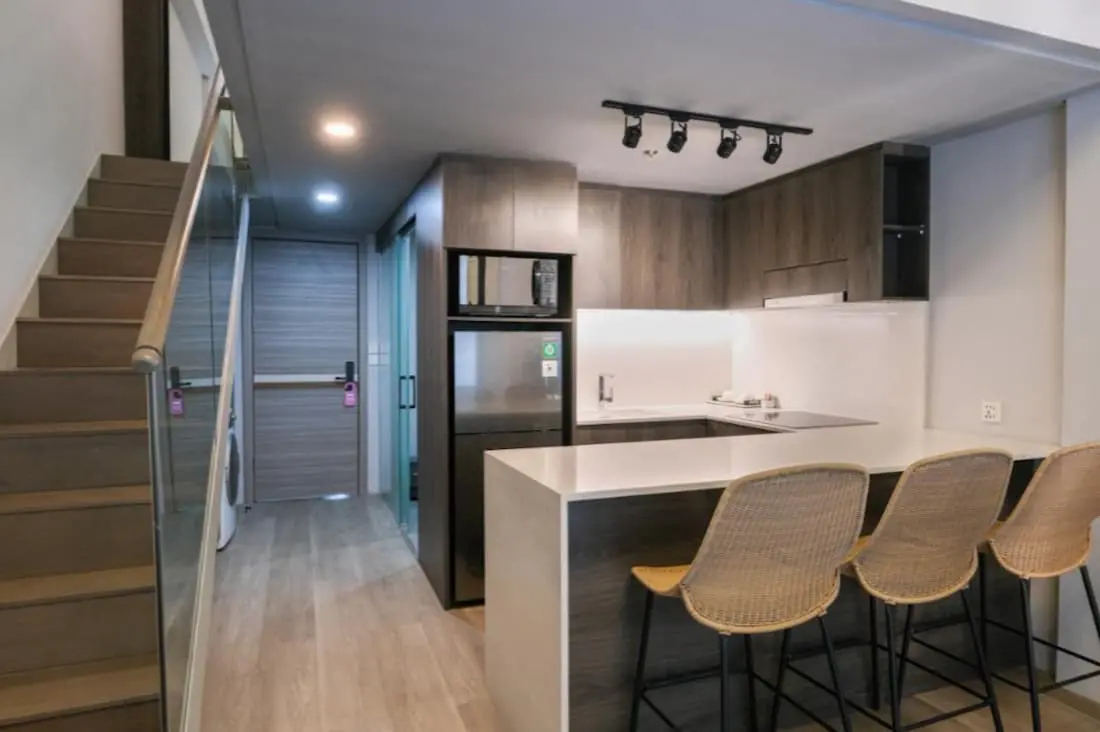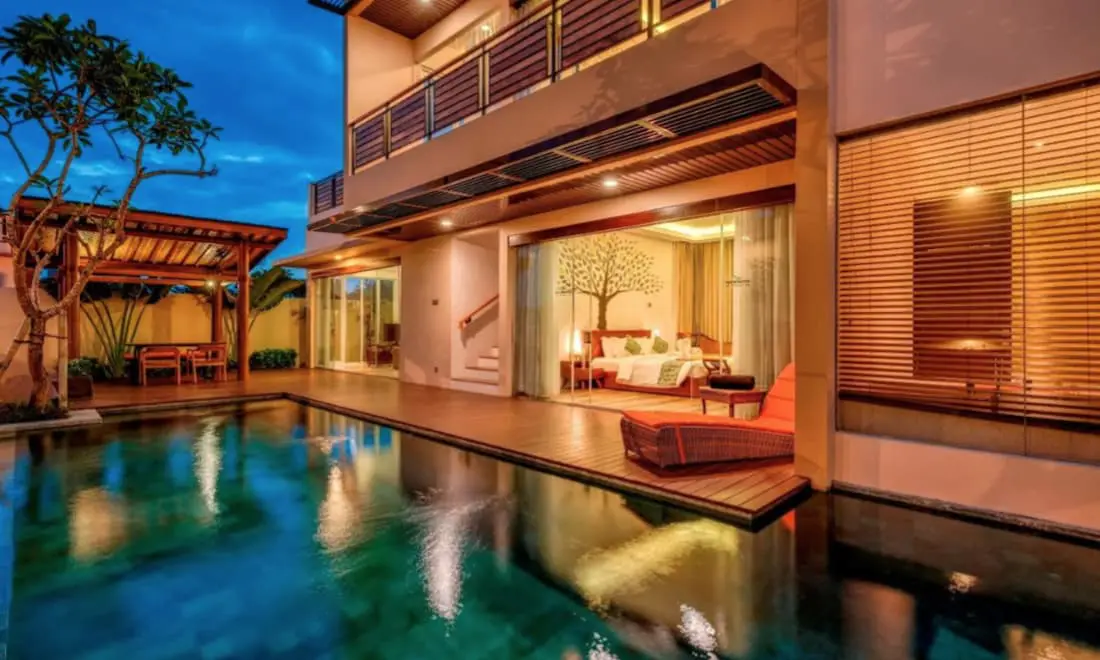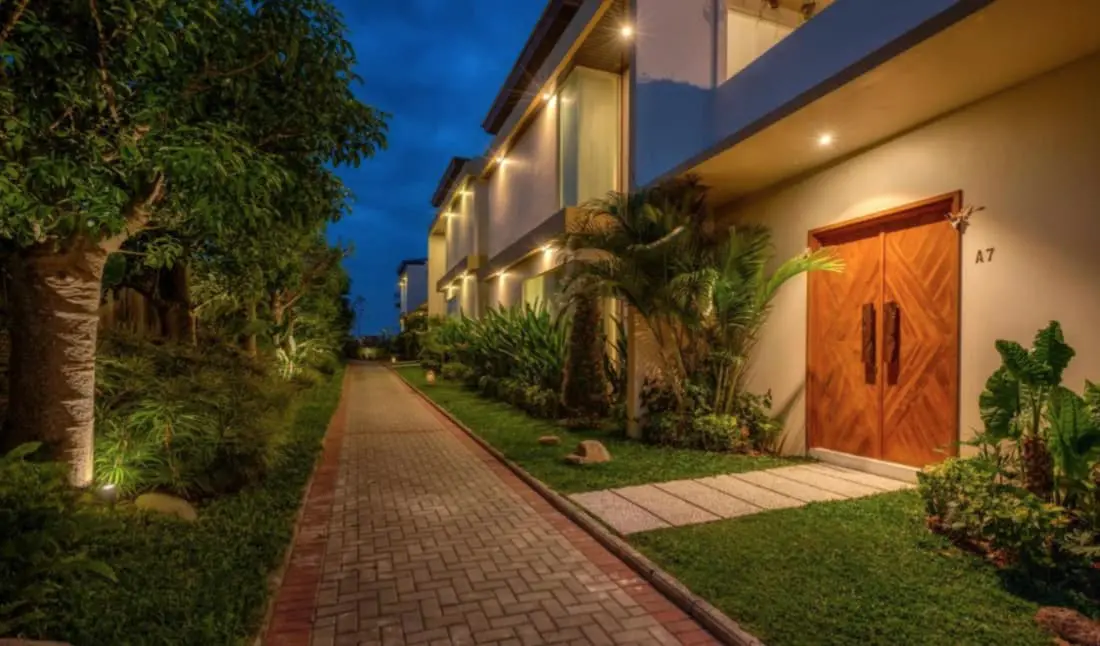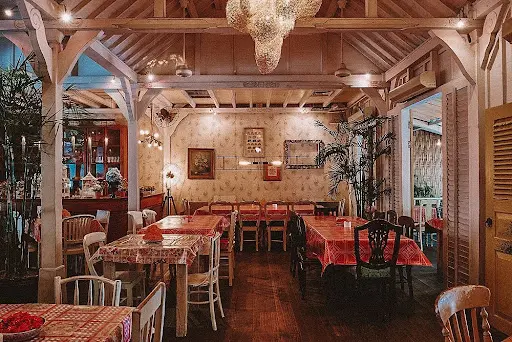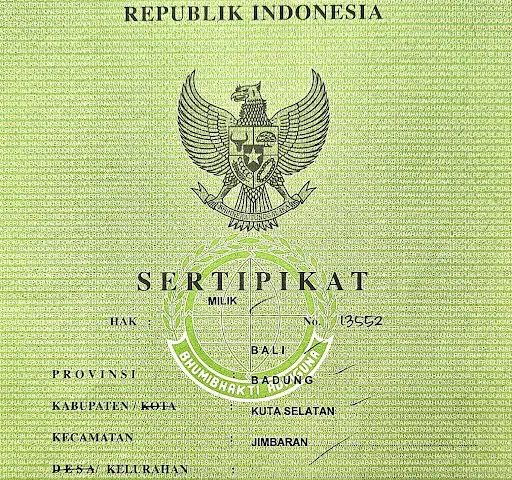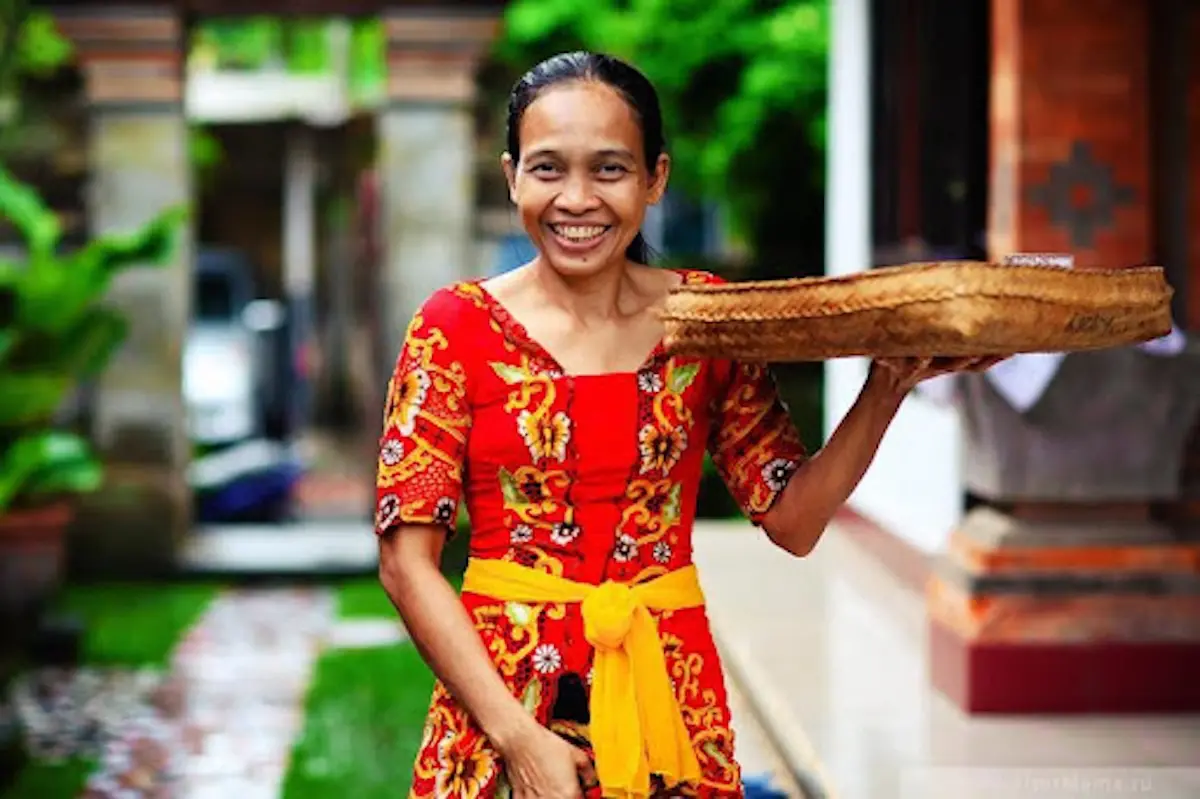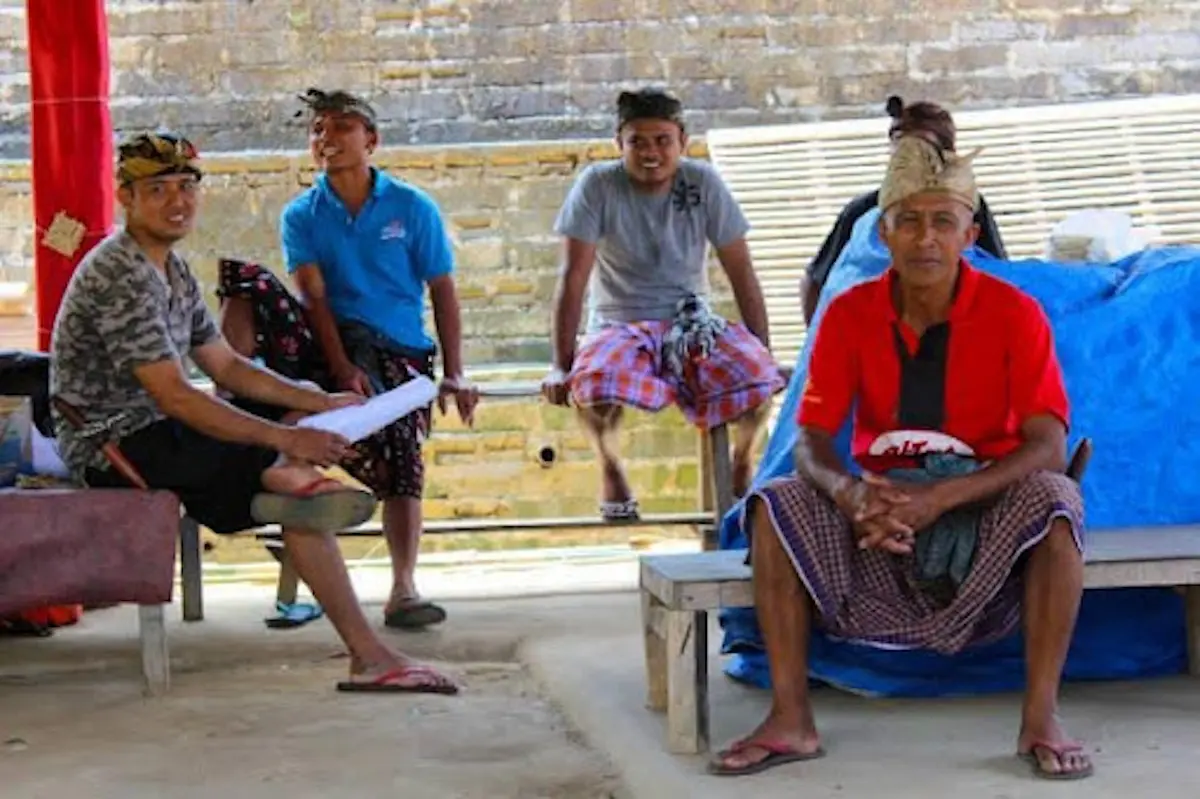The island of Bali is part of Indonesia, with its capital in Denpasar. It is located in the Malay Archipelago, among the Lesser Sunda Islands, in the middle of the ocean between Malaysia to the north and Australia to the south. The average population, including expats, is around 6,000,000 people, of which only 4,000,000 to 4,500,000 are locals.
Bali is famous for its:
Rice terraces
Beaches and surfing
Volcanoes and untouched nature
Affordable cost of living
Unique religion and ceremonies, unlike any other
Sincere residents who believe deeply in the laws of karma
Cleansing retreats, holy water baths, meditations, and sacred rituals
A life beyond time and money
Special vibrations of kindness and happiness that can only be felt here...
BUT IT WASN’T ALWAYS THIS WAY...
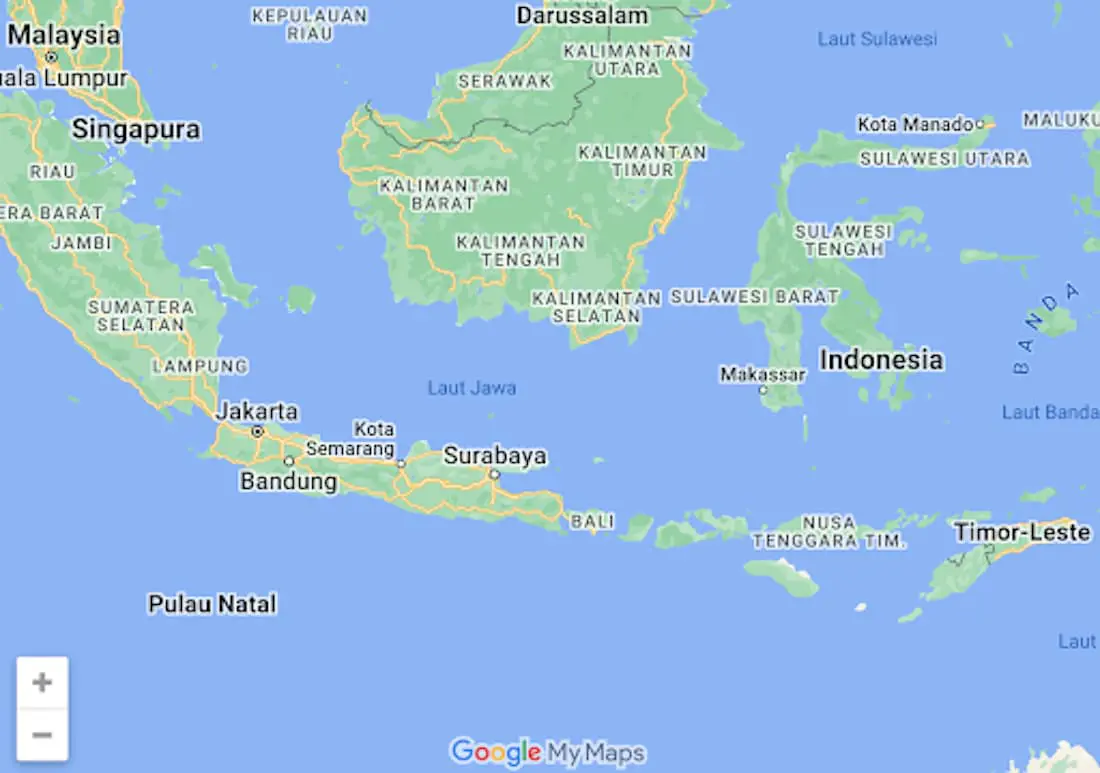
Bali is an island with an ancient history, with the first mentions dating back to around 2,500 BCE. It was during this time that the first settlers from China and Malaysia arrived in Bali for trade. They invented the unique rice terrace irrigation system called "subak", which is still used on the island today. In every village, you can still see people using this system, connecting with a history that is over 4,500 years old.
It was only 2,000 years later that bronze, copper, and iron appeared in Bali, and thanks to the Chinese, the first signs of civilization reached the island.
Before the arrival of Hinduism, Bali was home to scattered tribes, such as the Aga tribe, which has preserved its traditions and unique social structure to this day. In the village of Trunyan, near Mount Batur - https://maps.app.goo.gl/5Ty2kumzccrq6YZT7 you can take a boat, cross the lake, and witness the harsh ways of the tribe: bones, skulls, and remains of decapitated bodies of villagers. It’s no wonder this village is called the "village of the dead".
The main foundations of the distinctive Balinese religion were laid by Hindus about 1,500 years ago. Many temples still carry the ancient traditions and teachings. In the town of Ubud - https://maps.app.goo.gl/4yuJbL9weVVMB4QY7 lies the very center of ancient power and ancestral wisdom. Of course, part of the true culture has been lost. However, even today, in many significant temples of Bali, you can explore the origins of Hinduism.
Around the 15th century CE, merchants from the East brought a new and progressive religion at the time – Islam – to the neighboring island of Java. From that point on, Bali's ruling dynasty mentally and religiously distanced itself from Java, sparking open hostility between Muslim Java and Hindu Bali. This rivalry continues to this day.
IN SOME PAINTINGS YOU CAN EVEN SEE THE ISLAND OF JAVA IN THE FORM OF A PIG CARCASS (AN OBVIOUS ALLUSION TO ISLAM), WHICH LOOKS AT THE ISLAND OF BALI IN THE FORM OF A ROOSTER (AN ALLUSION TO COCKFIGHTING).
In the 1900s, the powerful Dutch kingdom held dominant control over the island’s territories and effectively colonized it. This led to widespread dissatisfaction and local struggles for independence across the island. Interestingly, the southern part of the island (modern-day Canggu, Kuta, Seminyak, Nusa Dua) - https://maps.app.goo.gl/94rgpKGTWRDkqVxm6 - put up the fiercest resistance.
One of the most significant chapters in Bali's history was the mass suicide (Puputan) of local residents, who chose to take control of their own fate rather than live under the oppression of colonizers. As a result of this demonstrative mass suicide, where islanders stabbed themselves and their children in the chest with the ritual dagger, kris, more than 4,000 people died.
Bali would only achieve full independence from foreign invaders after the end of World War II. It was during this time that Ngurah Rai, a hero still revered on the island, led the uprising against the Japanese colonizers. You can see his statues all over the island - https://maps.app.goo.gl/tDQW2tqrF4pNjSzB9 starting from the airport that bears his name. There are numerous references to this historical period throughout the island.
TO SEE BALI, YOU MUST LOOK. For travel and active leisure, be sure to visit these areas:
Kintamani, with a stunning view of the active Mount Batur volcano - https://maps.app.goo.gl/9CzCS7oUaLQyQYNN9.
Amed, home to the island’s best snorkeling spots - https://maps.app.goo.gl/jedHQCLZ6C2251p87.
Lovina, known for its beautiful sunsets and morning dolphin-watching tours - https://maps.app.goo.gl/h2TT9yZZH88N9MYRA.
Nusa Penida, featuring the island's most famous Instagram-worthy beach - https://maps.app.goo.gl/mzk8TCysUznjzifj7.
Trunyan Village also known as the "village of the dead" - https://maps.app.goo.gl/5Ty2kumzccrq6YZT7.
Natural hot springs of the active volcano - https://maps.app.goo.gl/vDz1BdZrJe18sBeT8.
Make sure to add these places to your "must-visit" list.
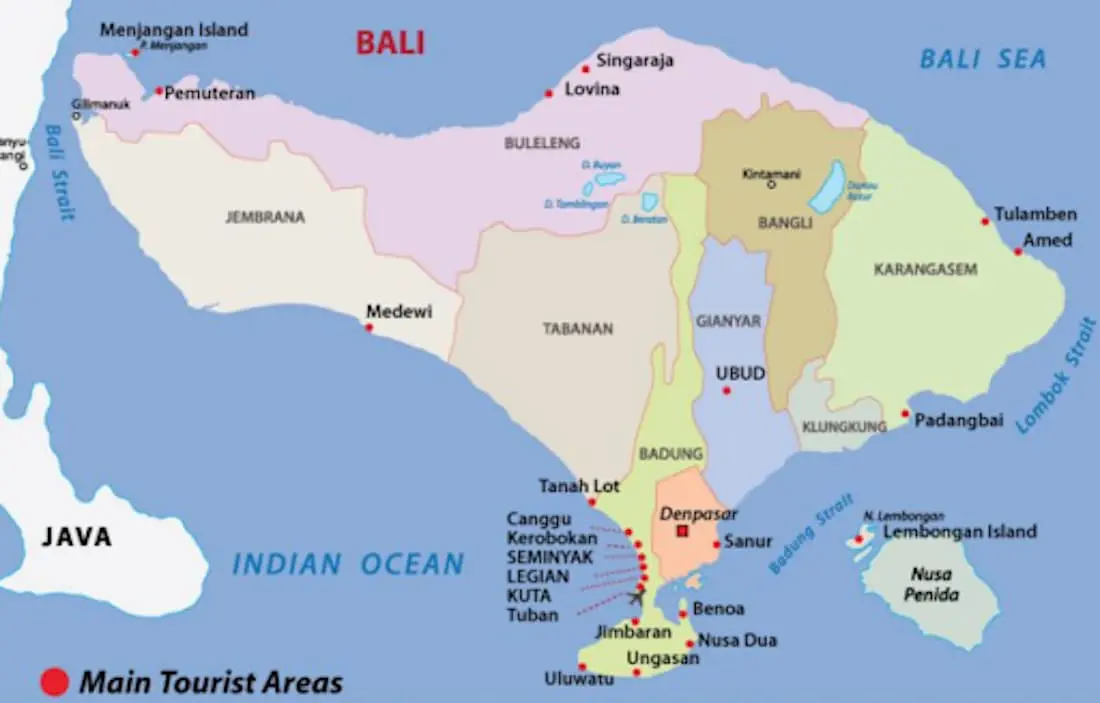
The MAIN TOURIST AREAS for living in Bali are Ubud, Canggu, Seminyak, Kuta, Sanur, Nusa Dua, Uluwatu, and Jimbaran.
Each area has its own unique characteristics and differs from the others.
UBUD - The mecca of eco-tourism. It's cool and humid here year-round. Retreats, vegan food, yoga practices, Vipassana, a "laid-back" vibe, and temples... This is what Ubud is all about, located right in the heart of the island. Of course, there is no access to the sea here.
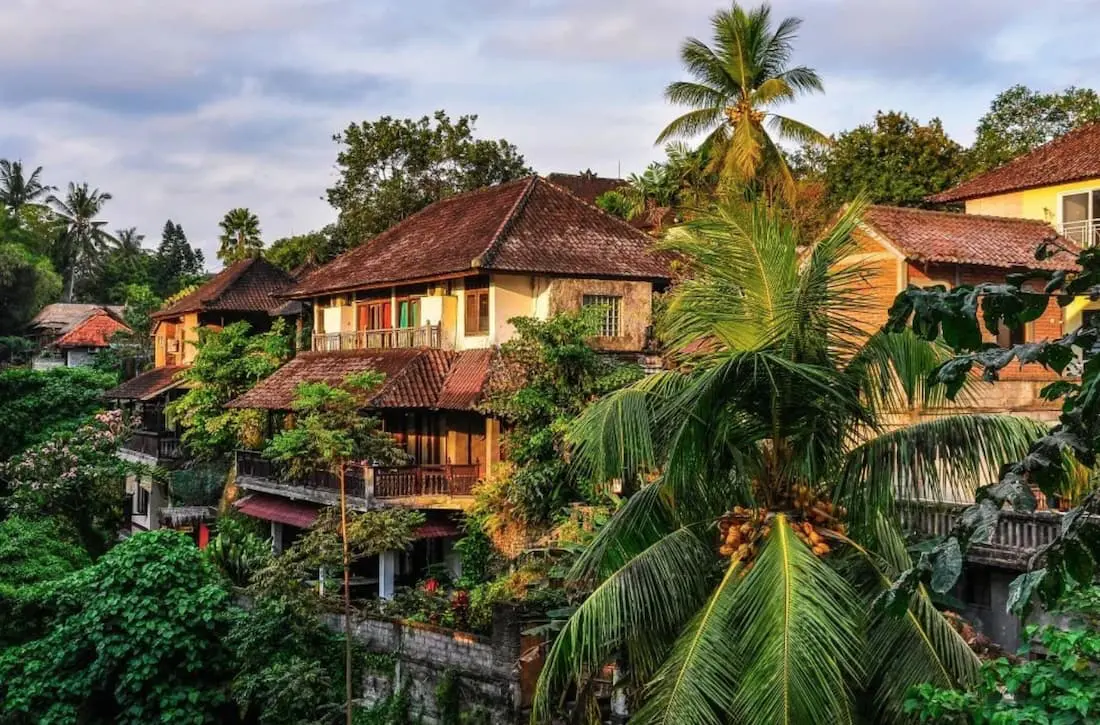
There is nowhere to walk here (as in most areas of Bali).
However, there are stunning rice terraces and many places where you can connect with nature. Despite this, there is dense development, traffic jams, and constantly rising prices. Ubud is outpacing many areas of the island in terms of price growth and is now one of the most expensive places to live.
Ubud is also home to the famous PARQ, a gathering and hangout place for the multilingual community - https://maps.app.goo.gl/xmvjznA6xrj17oqC7.
CANGGU - Urban hustle in the middle of narrow Balinese streets. During the day, it gets quite hot due to the widespread concrete construction.
Canggu has the highest concentration of expats per square meter. It also has the most trendy cafes with views of rice fields or the sea. The food here is diverse, delicious, and affordable. Housing costs are reasonable, and the selection is quite large, especially in the off-season.
Surfers flock here, and it's one of the most densely developed areas on the island. The main traffic issues, whether on a bike or car, are centered in Canggu.
Canggu is famous for its sunsets. Many beaches are set up with cozy tables and bars that open only in the evening to catch the sunset. Here’s a top spot where you can see the beauty of Bali's sunsets for yourself - https://maps.app.goo.gl/PuU5ZzAWN2JsxoiX8.
If you've come to the island not just to relax but also to meet new people, connect with amazing individuals, or start your business, Canggu is perfect. However, if you're an introvert who values peace and quiet, you might find it uncomfortable here.
SEMINYAK AND KUTA - Nightlife and party hotspots. The activity in these areas never stops, even at night. This is where the island's party mecca is located – Legian Street -https://maps.app.goo.gl/iXhG6dpdTEZTURrZ9.

In these areas, it’s easy to encounter women of easy virtue, massages with a notorious ending, and transgender individuals who lure European men into their networks.
The development is dense, and the cost of living is roughly similar to that in Canggu. It’s difficult to consider this area for long-term living. Usually, foreigners come here for 3 to 5 days, as not everyone can endure the constant carnival atmosphere.
The main and most famous beach in the area is Kuta Beach - https://maps.app.goo.gl/izN3AEyo8VxQgdnE7. It’s a great place for a walk in the morning (before 9:00 AM) or in the evening (after 4:00 PM), when the sun is not as hot. But be cautious: this beach is notorious for phone, helmet, and bike thefts, as well as persistent vendors selling various items. Here, you might even be offered to try magic mushrooms.
IMPORTANT!!! - The use of drugs in Bali is a crime. The sentence for drug-related offenses can range from 10 to 12 years in prison, or a bribe of at least $10,000 USD.
Here lies the largest shopping center in Bali - BEACH WALK - https://maps.app.goo.gl/Wk7qYMAgyYEMjtLH8. It’s decent for shopping in Bali, where you can find quality mass-market items.
SANUR - a family-friendly area and one of the most peaceful places on Bali.
Recently, a new shopping center opened right on the main Sanur waterfront, featuring branded clothing and plenty of entertainment for children - ICON BALI - https://maps.app.goo.gl/SZux97nYr47fsVwD6. Here, you’ll find more luxury shops, making shopping quite enjoyable.
Currently, ICON BALI is still under renovation, with only about 50% of its spaces open. The renovations are expected to be completed by the end of 2024.
From Sanur, it’s convenient to reach the best beach for swimming and relaxation in Bali - SECRET BEACH - https://maps.app.goo.gl/CAE3JKTHQbvC15qW6. This is a stunning, secluded spot hidden from prying eyes, featuring clean water, calm seas, and no crowds of tourists.
The cost of living in Sanur is relatively affordable. There are plenty of cozy family cafes. The lifestyle here is quiet and relaxed. The area mainly consists of private housing, and it’s equidistant from most tourist attractions. Additionally, it has direct access to the sea, making Sanur a desirable place for expat families looking for long-term residence. The Sanur promenade is also suitable for comfortable family walks.
NUSA DUA and JIMBARAN - These areas are underrated for living. This part of the island isn’t as heavily marketed but is gaining popularity due to its good transport accessibility (a bypass road has been built nearby), the absence of traffic jams (though they can occur, delays are usually only 3-5 minutes if you’re on a bike), affordable living costs, and a good selection of new housing.
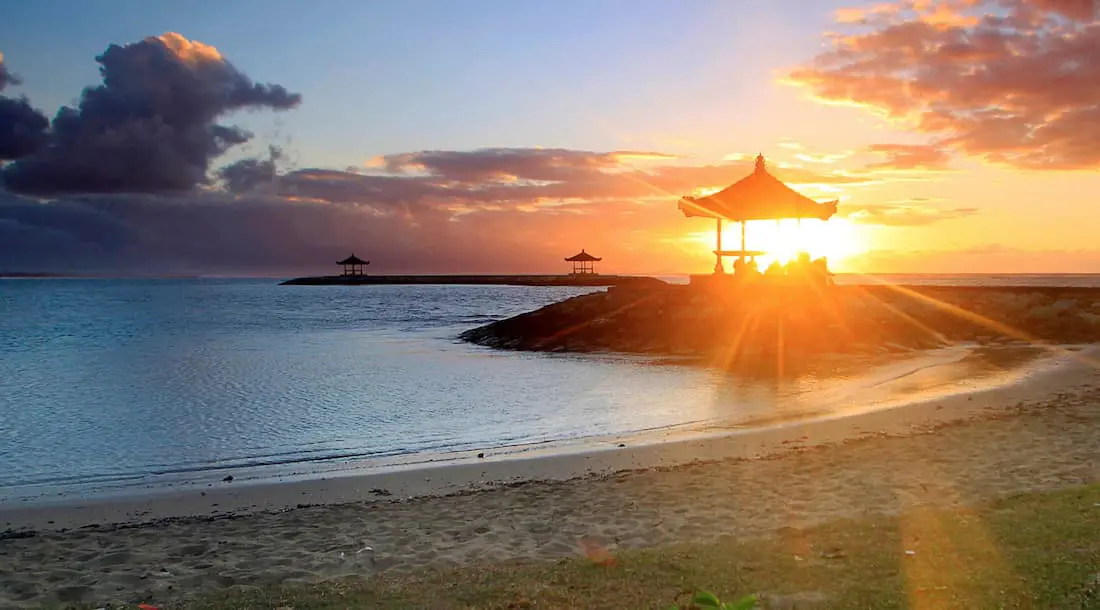
In Bali, the housing issue remains a significant challenge, with a lack of quality accommodation in the mid-price segment. What Indonesians build often doesn’t meet the standards of Europeans, despite the fact that many are actively investing in construction in Bali.
For more information on how to build in Bali and what foreigners can purchase, I've written here: - https://bali-legal.com/en/kupit-i-postroit-nedvizhimost-na-bali-inostranczu-en.
Nusa Dua is Bali’s calling card for official delegations from around the world. This is where the G-20 summit took place, for which the island’s best waterfront was built - https://maps.app.goo.gl/pF2UuAuLw8cNgPi47. Come here to enjoy a morning latte with almond milk and listen to the sound of the incoming waves.
For those who enjoy walks, there’s a large park near the waterfront. By the way, this is almost the only place on the island where you can really take a comfortable stroll.
УЛУВАТУ - is an actively developing area.
The most famous beaches and beach clubs in Bali are located here. To truly appreciate the area, visit Melasti Beach - https://maps.app.goo.gl/71Jb5TWKLD1puvXP8 or White Rock Club -https://maps.app.goo.gl/Fz9h3zSNZ5e1MAKb7.
This area is increasingly inhabited by expats, and it might be one of the main places in Bali where there are virtually no traffic jams, offering an ideal balance of wide new roads and the real jungles of Southeast Asia.
The beaches here are located away from residential areas, allowing you to live in perfect peace while being just a 10-minute drive from some of the coolest beaches and stunning ocean views.
The cost of renting a villa here is already higher than in the densely populated Canggu or Seminyak, but the quality of life is significantly better. It’s an ideal quiet oasis away from the hustle and bustle of city life and business.
For more about the cost of living in different areas of the island, read here - https://bali-legal.com/en/rashodi-na-bali-en.
THE MAIN CURRENCY OF BALI - is the Indonesian rupiah. Many joke that when you arrive in Bali, you instantly become a millionaire, and that’s actually true. At the time of writing this article, the Indonesian rupiah is quoted at around 16,500 IDR for 1 USD.
So, for 100 dollars, you will receive about 1,650,000 IDR. However, this comes with a few minor issues. The largest banknote is only 100,000 IDR, so if you need to exchange a sum of 500 - 1000 dollars, you’ll end up with a large amount of cash that’s hard to fit in your wallet. And ATMs dispense no more than 3,000,000 IDR at a time, as that’s the maximum thickness of a stack of cash that an ATM can issue =).

You won’t be able to get a bank card without a work permit or investor documents, so if you're coming for a vacation, just use cash more often. For this, use the currency exchange services, which are available everywhere.
VISA and MASTERCARD from international banks are widely accepted. In stores and shopping malls, you can easily pay by card, but local markets and small warungs (local eateries) only accept cash.
Be cautious, as fraud in exchange offices is still common on Bali. They might tell you one exchange rate but give you less money than expected. Always count your money right at the counter, and if you notice a shortage, smile and kindly ask for the difference back. The cashier will say “sorry ya” and return the missing amount without any issues.
In general, if you notice someone trying to trick you, handle it with a smile. This way, you'll get along better, and they’ll stop trying to deceive you. This is Asia, and things work a bit differently here.
TELEPHONE SERVICE on the island is excellent. The undisputed #1 provider is Telkomsel. You can find this provider anywhere on the island, and even in the most remote villages, there are places to top up or buy SIM cards.
Upon arrival, you can get a SIM card right at the airport from Telkomsel. The cost for the SIM card and a starter package with 30 GB of internet ranges from 150,000 IDR to 250,000 IDR (around 10 to 15 USD). All you need for registration is your passport.
Balinese workers tend to be a bit slow, so the whole process might take about an hour, provided there's no line. SIM cards are typically valid for up to 3 months. If you have a visa for over a year, the SIM card can be extended for a longer period.

MOBILE AND FIXED INTERNET. Mobile internet generally works well, BUT THE DEDICATED INTERNET IN VILLAS, GUESTHOUSES, AND APARTMENTS... is often very poor.
Out of the advertised 100 Mbps that travelers from Russia might be used to, you’ll likely get 20-25 Mbps for download and 8-10 Mbps for upload—and this is almost always the case. Interestingly, even installing an additional router doesn’t guarantee better internet quality.
As a result, you can more or less stream movies smoothly using mobile internet, but working from home is not always easy. Internet frequently has interruptions and outages. This is something to be prepared for, especially for those who work remotely or rely on stable and high-quality internet connections.
TIP: Look for a cozy café with good internet near where you’re staying. Settling in with a delicious latte and working for a few hours is the way of life for anyone who’s been living on Bali for a while.
FOOD in cafes and restaurants is incredibly diverse. It’s truly a gastronomic paradise. No joke.
Want a vegan, gluten-free avocado toast? – No problem.
A medium-rare marble steak? – There are 10 restaurants nearby.
Lobster in an exotic sauce? – You won’t have to go far.
Or maybe a whole roast suckling pig or duck?
You’ll find Russian, Azerbaijani, Italian, Turkish, Thai, Japanese, Chinese cuisine... all within reach. It’s more expensive than local food, but it’s absolutely delicious.
And this is the kind of food you can try in any other country. What makes Bali special are three authentic Indonesian dishes that everyone should try at least once. They’re all very affordable and can be found just around the corner.
1 - Nasi/mie goreng (fried rice or noodles) - a classic spicy dish of rice (or noodles) fried in sunflower oil with vegetables, a fried egg, local seasoning mix, and chicken (sometimes with added seafood). The taste is completely different from any fried rice you’ve had elsewhere.

Many tourists remember this dish as a symbol of Bali and eat it at least once a day during their stay on the island.
2 - Bakso (суп с мясными шариками) - a soup made from meat broth (beef, pork, chicken, or a mix), with meatballs, noodles, local herbs, seafood, and a blend of local spices.
The soup is somewhat similar to the famous Vietnamese pho bo, and it’s worth trying at least once. On local markets, it costs about 30 to 40 cents.
3 - Nasi campur (mixed rice) - while the name suggests rice on a skewer, it’s actually the chicken that’s cooked on skewers. This dish is a combination of various sides like vegetables, greens, tofu, fried potatoes, and skewered chicken. At the center of the plate is the main ingredient of any Indonesian meal: white rice (nasi putih).
Rice is a sacred food. On Bali, it’s much harder to find bread than rice, and good-quality bread is even rarer. Most meals start and end with rice. It’s a part of every Balinese meal, even breakfast.
Poor families mostly eat rice or rice with vegetables—every day, three times a day. Wealthier families add chicken or red meat to their rice (usually on special occasions).
Want to try something else that's traditional?
Pisang goreng (Fried Bananas) - Banana fried in batter, served with chocolate or strawberry sauce on a banana leaf.
Gado-gado (Vegetarian Dish) – Steamed vegetables with tofu or tempeh, wrapped in thin rice paper, served with vegetables and sweet peanut sauce.
Babi guling (Roast Suckling Pig) – A whole young milk-fed pig roasted on a spit.
Bebek goreng (Traditional Fried Duck).
Enjoy your meal! =)
MEDICAL CARE – is terrible and even dangerous by European and Russian standards.
Balinese people are very afraid of causing harm or pain. Additionally, they often don't have a good understanding of how to provide first aid or handle various urgent medical situations.
Did you fall off a scooter? – They’ll give you an ointment that will make your leg fester for three weeks instead of healing, and then just say “sorry,” and that’s it.
Got hit with dengue fever? – If you don’t have insurance, they won’t let you stay in the hospital, even with a fever of 40°C (104°F), and will send you home.
Toothache? – You’ll be lucky if it gets treated properly and not destroyed along with your gums, potentially introducing new infections. Forget about getting a proper filling.
And it doesn’t matter how much money you have. It will be equally bad whether you spend 1,000,000 or 10,000,000 rupiah. Or, if you're lucky, equally good! =)
Yes, don’t be surprised. Prices fluctuate that much. Sometimes, we get lucky and find a good doctor, but more often – NOT.
Does insurance help? Yes, it really helps. Especially considering that Bali offers plenty of opportunities to get injured. Riding scooters, surfing, hiking, rafting, climbing mountains and volcanoes, or just dealing with acclimatization.
Additionally, food poisoning and dengue fever are quite common. In both cases, a good doctor is essential.
TIP: IF YOU GET SICK, you can use the services of our fellow countrymen practicing in Bali. For example, here’s the contact for the most popular bot service on Telegram – @BaliHealthBot.
Russian-speaking doctors help with finding medication equivalents, scheduling tests, interpreting test results, and assisting in urgent situations involving dental issues, injuries, and more.
WHERE TO GET INSURANCE? – Here’s a great website where you can get insurance for tourists or expats, for both short and long terms. On average, such insurance will cost around $60–80 USD per month per person - https://www.tripinsurance.ru/?partnerId=3309. Plus, the quality of medical care through an insurance company is significantly higher.
Considering the cost of one day in a Bali hospital starts at about $100 USD, it pays off pretty quickly -).
Read more about the cost of healthcare with examples and prices in this article - https://bali-legal.com/en/rashodi-na-bali-en.
Weather by Seasons
Traditionally, Bali is divided into three seasons::
Rainy Season (November to March): During this time, it is very humid and hot in Bali. Prolonged heavy rains occur (most often at night), with average daytime temperatures around 33 degrees Celsius.
Windy Season (March to June): During this period, a large amount of debris is brought in from the ocean, making swimming at the beaches or surfing quite unpleasant. Daytime temperatures drop to 30 degrees Celsius, and the wind provides a pleasant cooling effect.
Dry Season (June to October): This is the coolest time of year (also referred to as “winter in Bali”). Temperatures drop to around 28 degrees during the day and can reach about 21 degrees at night.
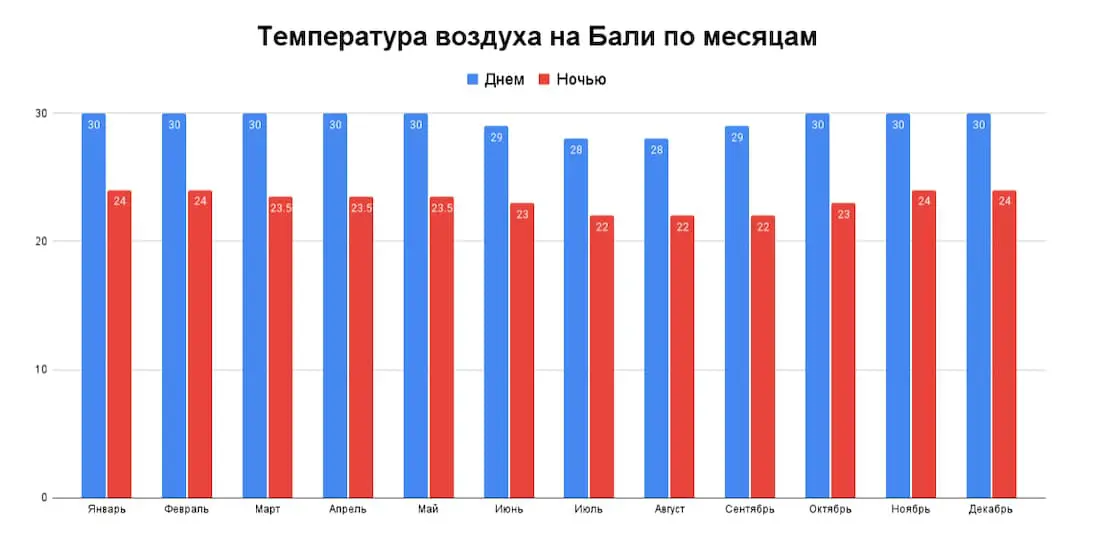
In fact, for the last two years, there has been no clear seasonal distribution, and during the dry season, it could rain for a week, while the wet season passed with minimal precipitation.
Additionally, the weather in Bali varies significantly by area. The wet season is much more pronounced in the central part of the island, including Ubud, Bedugul, and Tabanan, where heavy rains occur more frequently and last longer. However, it is cooler here.
Many tourists choose the developed southern part of the island—Canggu, Seminyak, Kuta, Nusa Dua, Uluwatu, and Sanur—during the rainy season and for living, as it tends to rain less frequently. However, the southern region is considerably hotter than the central part of the island in any season.
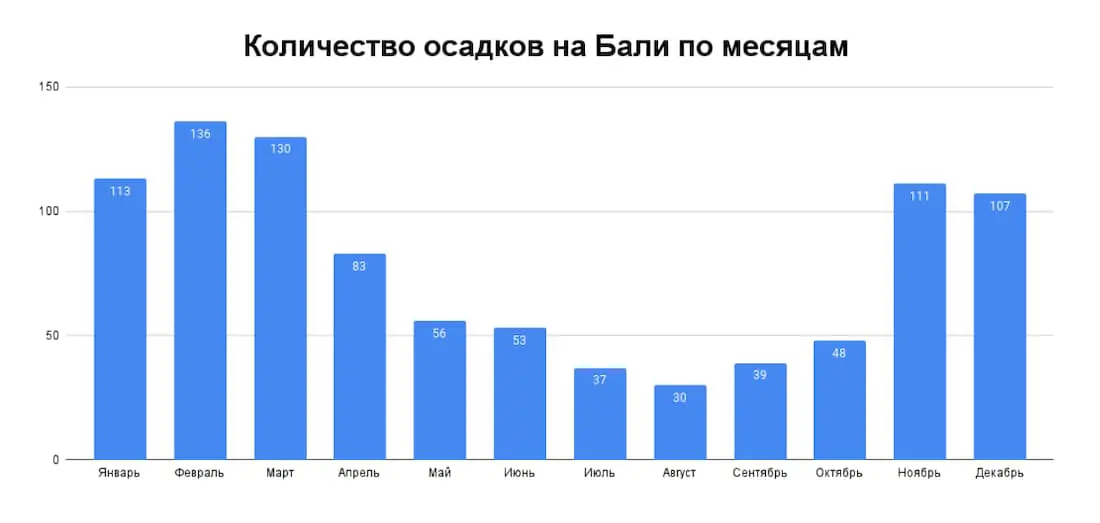
Choose what suits you best! =)
When is the best time to visit Bali?
It depends on where you’re coming from. Australians, who view Bali as their own vacation home, visit year-round due to the comfortable weather, low prices, and opportunity to recharge.
Chinese and Korean tourists start arriving from March to October, coinciding with the Chinese New Year and the entire dry season. This time of year sees a lot of tourists, but not from Russia or Ukraine. This is actually the BEST time to visit Bali for tourism.
Russian tourists primarily come when it gets cold in Russia, from November to February (which coincides with the hottest and wettest season in Bali). These are mostly winter vacationers and short-term tourists.
So it’s fair to say that the tourist flow to Bali never really stops, although the peak definitely occurs from December to February — during the Christmas holidays and New Year. During this period, traffic jams in Bali reach colossal proportions, queues at stores become long, and narrow Balinese roads and shortcuts are often blocked by tourist buses.
How to Get to the Island?
Indonesia is a country made up of more than 17,000 islands. The most popular modes of transportation within Indonesia are airplanes and boats (ships).
To reach Bali from mainland Indonesia, you can only travel by air. The minimum flight duration from Moscow to Denpasar Airport, Bali, is about 19 hours, usually with layovers in Middle Eastern countries (Oman, Qatar, UAE) and Southeast Asia (airports in Malaysia, Thailand, or China).
However, there are several tips to make your journey more budget-friendly and save at least 30% on your flight.
One option is to travel through China. This route involves long layovers in major Chinese cities and can take up to 40 hours if flying from Moscow, for example, but the ticket price for this journey is approximately $400 per person.

Traveling via Thailand is the most direct and quickest option. Bangkok is a major transit hub, and interestingly, it’s rarely offered as a flight option. The flight may be more expensive, but you’ll save about 14-15 hours of travel time, and the quality of the airline will be higher.
The best places to search for tickets:
Aviasales - https://www.aviasales.ru/. You can always find a good deal here, especially if you book tickets just before your flight (1-2 days in advance).
Skyscanner - https://ru.skyscanner.com. I usually buy tickets here. Prices can be up to 20% lower compared to Aviasales.
Direct purchase from an Asian carrier. You can try Traveloka - https://www.traveloka.com/en-id. It might be more expensive, but the tickets are issued directly by the airline, not an aggregator.
BEFORE YOU ARRIVE, you’ll need to prepare just a few documents, which will most likely be checked at the airport of your departure.
Good news: any COVID restrictions and mandatory vaccinations have been lifted, so from a medical standpoint, everything is straightforward.
To enter the island without any issues, you will need:
A valid passport with at least 6 months of validity from the date of arrival.
A visa (either long-term or tourist). A budget-friendly 30-day tourist visa can be obtained directly at the airport upon arrival. A long-term visa needs to be arranged in advance. If you’re traveling with a child, a separate visa is required for them as well.
If you need a longer visa or plan to visit the island for business purposes, I’ve outlined the different types of additional visas and their costs here - https://bali-legal.com/en/visa-bali-en.
Medical insurance. I’ve already highlighted the importance of this earlier. Don’t create a fake document. It’s needed primarily for your own safety, not just to cross the border. You can get fake insurance here - https://www.euroavia.ru/#bron.
On average, real quality insurance costs around 60-80 USD per month per person - https://www.tripinsurance.ru/?partnerId=3309.
I’ve described the cost of medical care with examples and prices in more detail in this article - https://bali-legal.com/en/rashodi-na-bali-en.
Proof of accommodation. This is 50/50. They might ask, or they might not. I think you understand that it’s better to be prepared. Bali is part of Asia, and if it’s in their guidelines, there’s no arguing with them. Trying to “fight the system” will only lead to conflict, and they might even deny you entry to the island.
Return ticket. Same story as with accommodation booking. Sometimes they ask, sometimes they let you through without it. Here’s a service where you can book a ticket reservation for cheap - https://www.euroavia.ru/#bron.
IF YOU HAVE ALL THESE DOCUMENTS, YOU'RE ALMOST IN BALI
Upon arrival at Denpasar Airport, you can get a visa directly at the airport. It’s very convenient now, and the cost of a 30-day visa is only 500,000 IDR per person (around 35 USD). You can extend this visa for another month without leaving the island at any of the numerous visa agencies.
However, after that, you will need to leave the island.
For visa extensions, I recommend reaching out to trusted professionals and our Indonesian partners. The price will be very reasonable, and the quality excellent - https://maps.app.goo.gl/ht5efnZfb4EXz7hR7?g_st=aw.
Here’s the agent’s direct phone number: +62 813-3895-0441 (Ugi).
At the airport, you’ll notice the longest line on the left side, just before passport control. This is where you’ll queue up for the 30-day VOA (Visa on Arrival).
If you need a longer visa or are planning to visit the island for business purposes, I’ve detailed the types of visas and their costs - https://bali-legal.com/en/visa-bali-en.
Additionally, as a tourist, upon arrival you’ll need to:
Register your customs declaration. This can be done at the airport or online within 48 hours before your arrival at this website: https://ecd.beacukai.go.id.
Register your phone’s IMEI (International Mobile Equipment Identity) number. This is necessary to use a local SIM card without issues and to legally import your phone into Indonesia. Unregistered phones will stop working after about 90 days (sometimes even 30 days). This is especially important for those staying longer than 30 days. You can also complete this registration right at the airport exit.
Ngurah Rai Airport in Denpasar is located right between the island’s capital and the beaches of Nusa Dua, about a 15-minute drive in either direction.
Bali is a small island, so it’s hard to say whether the airport is technically “inside” or “outside” the city limits. On Bali, these distinctions are quite flexible.
After clearing customs and getting your entry stamp, you can order a taxi through the GOJEK or GRAB apps. Make sure to install these apps on your phone ahead of time.
Keep in mind that some apps may not work until you arrive, as they require local internet and a local SIM card. I’ve already mentioned where you can get a local SIM and how much it costs.
Using these apps will be cheaper than taking one of the BLUEBIRD taxis that roam around the airport looking for newly arrived tourists. These taxis will often charge you twice the regular rate.
Fair prices for rides from the airport are approximately:
To Ubud: around 350,000 IDR (~20 USD).
To Canggu: around 350,000 IDR (~20 USD).
To Nusa Dua: around 200,000 IDR (~13 USD).
What's the Best Way to Get Around the Island?
On the first day – take a taxi. You’ll likely have a lot of luggage, be very tired from the flight, and suffer from a serious case of jetlag.
It usually takes about three days to fully recover from the long journey. Naturally, your concentration won’t be the best, you won’t know the island well yet, and you’ll need time to get used to the traffic. So, for your safety and convenience, simply order taxis from point to point during your first few days. It’s the best option to stay safe and avoid any unnecessary stress.
Tip!
If you're staying on the island for 2-3 weeks, consider using local motorcycle or car taxis for the entire duration of your stay.
Traffic here can be quite chaotic, and it can be challenging to merge into the flow, especially WITHOUT INSURANCE!
The cost of motorcycle taxis is quite low, with rides costing no more than $3-4. Car rides start at around $10.
Two Popular Rental Options for Getting Around the Island:
Scooter
Car
I’ve already detailed the main expenses and differences between these modes of transportation - https://bali-legal.com/en/rashodi-na-bali-en.
Main risks of riding a scooter::
High Likelihood of Accidents: On Bali, it's common to see expats with scraped arms and legs or even bandaged heads—these are often the results of riding bikes and the process of “adapting” to local traffic.
Theft of Phones: There's a real risk of having your phone snatched while riding. Inexperienced tourists are easily identifiable on bikes. Especially at night, local thieves (often from neighboring islands rather than Bali) may target victims, using multiple bikes to knock you off the road and steal from you.
Main risks for driving::
Very narrow roads where it’s difficult to pass and easy to damage the car. Considering that there is no mandatory car insurance here, all risks and costs for any damages will fall entirely on you. So, before renting, make sure that you and your renter clearly understand the division of responsibilities in this matter.
Poor quality of rental cars. Worn tires, weak engines, issues with the gearbox, brakes, etc. For city driving, this may not be critical, but if you plan to drive around the entire island, it could become a problem. Bali is a very hilly island with many steep climbs and descents. If it rains, many of these hilly areas get flooded, leading to real landslides, which can have tragic consequences.
To explore the island, I highly recommend using a special vehicle (like a jeep) with a driver. The cost for such a jeep will be around 1,000,000 IDR per day (70 USD), but in the end, safety is what matters most.
Of course, if you’re staying long-term, you will likely learn to ride a scooter. To drive it independently, you need an international driver's license, or you can obtain Indonesian driving rights in your name right here in Bali.
Read more about traffic and rules in Bali here - https://bali-legal.com/prava-bali.
Once you learn to drive safely and with your documents in order, the joy will be limitless. This is a certainty, but the journey can be challenging and filled with obstacles =).
Where to Stay Upon Arrival / Prices?
For information on housing prices with a final calculation table based on your budget and area, read here - https://bali-legal.com/en/rashodi-na-bali-en.
The most popular types of accommodation in Bali are:
Guesthouse
Apartments
Hotel
House
Villa
The cost of accommodation will depend on its type and the area where you will be staying.
GUESTHOUSE - the most budget-friendly option. Typically, this is just a separate room in a house that has several rooms. Amenities include a bed and a private bathroom, which is likely combined with a shower and toilet. The shower may even be located directly above the toilet. A shared kitchen is usually available on the same floor.

A package may include cleaning once a week, along with a change of towels and linens. The quality of cleaning often leaves much to be desired, but it’s much more comfortable than having to clean yourself.
Such accommodation is typically used for short stays ranging from 1 to 5 days or if your budget is very limited. Guesthouses are particularly popular among tourists who want to explore all the attractions of the island. They simply move from one guesthouse to another via motorbike taxis, visiting key areas of the island like Canggu, Seminyak, Ubud, Lovina, and Amed.
- The quality of the internet in a “guesthouse” will be low.
- Utility bills are already included in the price.
- Air conditioning may not be available at all (especially in remote areas of the island).
- Sometimes, a shared pool may be included.
- Neighbors coming and going at night may cause discomfort.
- The average size of rooms in guesthouses is 25-30 square meters.
- The average price per night ranges from 300,000 IDR (20 USD) до 600,000 IDR (40 USD).
- The average monthly cost ranges from 4,000,000 IDR (250 USD) до 10,000,000 IDR (700 USD), depending significantly on the area.
You can search for guesthouses for short stays here - Booking - https://www.booking.com/.
APARTMENTS - accommodation of a higher class. Essentially, these are apartments in multi-story buildings. However, the concept of a multi-story building in Bali is quite different from what we are used to. Construction of buildings taller than four stories is prohibited on the island, so apartments are often found in 2-3 story structures, meaning there are not many neighbors.
Apartments can be single-story or two-story. This option is much closer to the European style of living. You have your own bathroom, a separate entrance, and a private kitchen. Typically, weekly cleaning services are also included.
Such accommodation can be used for both short stays (3-5 days) and longer ones (from 1 month). Many people, tired of the hustle and bustle of guesthouses, happily seek out such apartments for extended living on the island.
- The quality of the internet in apartments is generally higher.
- Utility bills are included in the price, except for electricity.
- Air conditioning is a must.
- They are usually without a pool, or there might be a shared pool in a larger complex.
- Neighbors are usually long-term residents, who are typically quiet and calm.
- The average size of apartments ranges from 45 to 60 square meters.
- The average price per night ranges from 700,000 IDR (40 USD) до 1,500,000 IDR (100 USD).
- The average monthly cost ranges from 8,000,000 IDR (600 USD) до 20,000,000 IDR (1,300 USD).
This type of accommodation can only be found in the southern regions (Kuta, Canggu, Seminyak, Nusa Dua, Jimbaran) and is mainly used by expats. You won’t find such options in the northern and central parts of the island.
Finding apartments at a good price and quality isn’t easy. For this, use local Telegram channels dedicated to housing searches in Bali.
From my experience, I can recommend an excellent apartment complex in the south of the island: PLAGOO HOLIDAYS PLAGOO HOLIDAYS - https://maps.app.goo.gl/vkXNjddSAw937zuK9.
One-bedroom apartments for a month: 10,000,000 IDR.
Two-bedroom apartments with a shared living room: 18,000,000 IDR.
Included: breakfast, cleaning service, gym, and swimming pool. The rooms are a bit dated, but the quality is still high for Bali.
For short-term apartment rentals, check here - Booking - https://www.booking.com/.
For long-term apartment rentals, look here - Facebook.Marketplace - https://web.facebook.com/marketplace/.
HOTEL - the simplest option for living and short-term stays. I won’t elaborate on this; it’s suitable for accommodations of 1 to 2 nights.
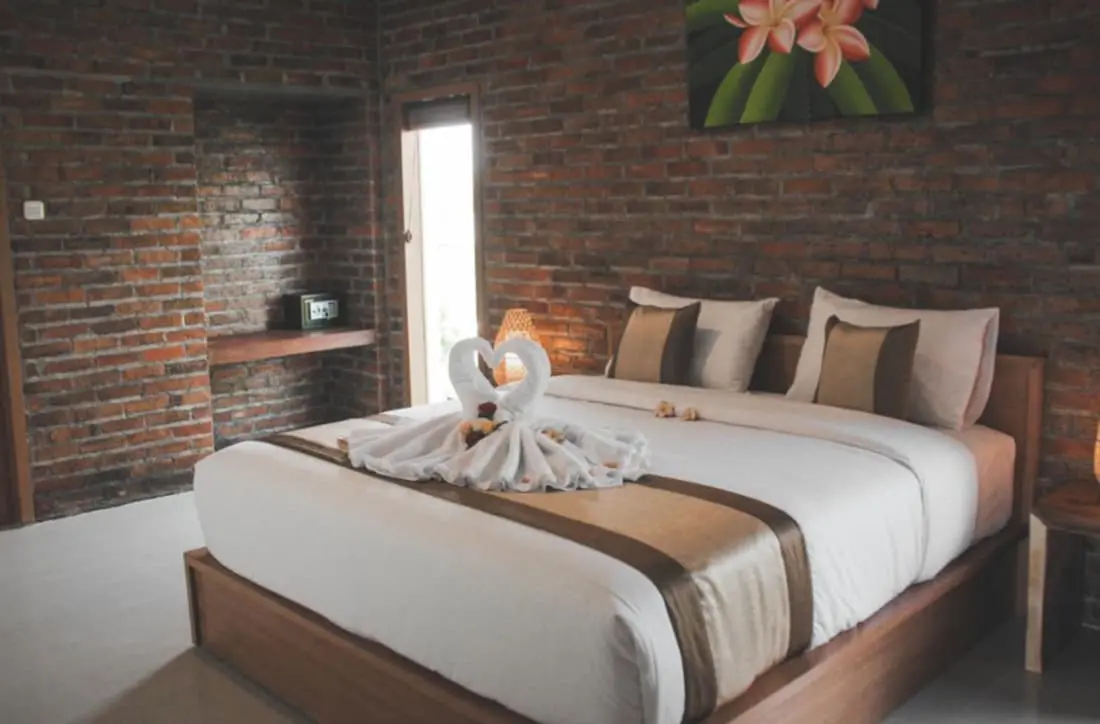
Hotels in Bali are very similar to hotels worldwide. Cleaning is done once a day, and a decent continental breakfast is usually included. Most hotels are located in the southern part of the island and in its central area—Ubud. Further north, you mainly find guesthouses and local houses.
- The quality of internet in hotels can vary. Often, it’s low.
- Air conditioning is a must.
- Usually, there’s a shared pool on the premises.
- Neighbors often include noisy locals—Indonesians, Balinese, Chinese, Indians, etc. Overall, it can be quite loud and not very comfortable, regardless of the hotel’s quality.
- The average room size is 20-25 square meters.
- The average daily cost ranges from 700,000 IDR (40 USD) до 4,500,000 IDR (300 USD).
- Breakfasts typically cost between 100,000 IDR (7 USD) до 450,000 IDR (30 USD) per person.
You can search for hotels here - Booking - https://www.booking.com/.
HOUSE - This is a distinctly Indonesian type of accommodation. Most Indonesians live in houses or townhouses. This option is better suited for long-term stays, starting from 1 month, as finding a house that meets your requirements can be very challenging, especially since these houses are built "for locals."
Here's an example of a typical Balinese house.

Quality of houses is generally low, but they are well-suited for budget accommodation for families looking to stay long-term on a small budget. Additionally, it’s important to note that when renting a house, you will be responsible for all its maintenance. This includes setting up internet, paying for electricity, gas, cleaning (or doing it yourself).
The most affordable houses or townhouses can be found in the capital of the island—Denpasar.
- The quality of the internet will depend on you; you can install a good connection if needed.
- There may not be air conditioning, but if you require it, you can install one yourself.
- Usually, there is no pool.
- Living in a house is quieter than in all the previous options, but you may have to deal with a nearby temple.
- Average house size ranges from 70 to 100 square meters.
- The average monthly cost is between 6,000,000 IDR (400 USD) - 15,000,000 (1,000 USD).
You can search for houses for long-term rental here - Facebook.Marketplace - https://web.facebook.com/marketplace/.
VILLA- This is a common choice for those with a good budget. Villas are selected for both short-term and long-term stays (starting from 1 month).
Villas vary based on the number of rooms, class, and area, making it quite challenging to determine price and final cost. I'll take the example of a 2-bedroom villa with a pool (the most commonly rented type).
At your own villa, you may have access to staff for preparing your favorite dishes, massage services, pool cleaning, sauna facilities, and, of course, daily cleaning.
Villas are most commonly found in the southern and central parts of the island. The Uluwatu area is currently gaining popularity—it's a quiet, private place with stunning nature, just 10 minutes from the main beaches and featuring beautiful new villas that cater to European preferences.
- The quality of internet at the villa will be “hit or miss.” Generally, it's average.
- Air conditioning is guaranteed in every room.
- A private pool is available on the premises.
- There are no neighbors or excellent sound insulation. This is one of the main advantages of a villa—complete privacy.
- Average villa size ranges from - 70 - 200 square meters
- The average daily cost is between - от 2,500,000 IDR (150 USD) до 6,000,000 IDR (400 USD).
- The average monthly cost ranges from - от 30,000,000 IDR (2,000 USD) до 70,000,000 IDR (4,500 USD).
You can search for villas for short-term rental here - Booking - https://www.booking.com/.
For long-term rental options, check here - Facebook.Marketplace - https://web.facebook.com/marketplace/.
What else to see in Bali if you have more than 15 days?
Above, I've already listed the must-see spots on the island. Here’s the list again:
Kintamani, with stunning views of the active Mount Batur volcano - https://maps.app.goo.gl/9CzCS7oUaLQyQYNN9
Amed, known for the best snorkeling on the island - https://maps.app.goo.gl/jedHQCLZ6C2251p87
Lovina, famous for beautiful sunsets and morning sea excursions to see dolphins - https://maps.app.goo.gl/h2TT9yZZH88N9MYRA
Nusa Penida, home to the most famous Instagram beach - https://maps.app.goo.gl/mzk8TCysUznjzifj7
Trunyan Village or the “village of the dead” - https://maps.app.goo.gl/5Ty2kumzccrq6YZT7
Natural hot springs from the active volcano - https://maps.app.goo.gl/vDz1BdZrJe18sBeT8
To comfortably visit all these places and enjoy a leisurely and in-depth travel experience, you need at least 10 days. But what if you have more time or want to add more details to your trip to the Island of the Gods?
Here’s a selection of world-renowned attractions in Bali:
WATERFALLS. Most of them are located in the hilly areas of Ubud. So, if you're specifically focused on visiting waterfalls, it’s best to stay in this area.
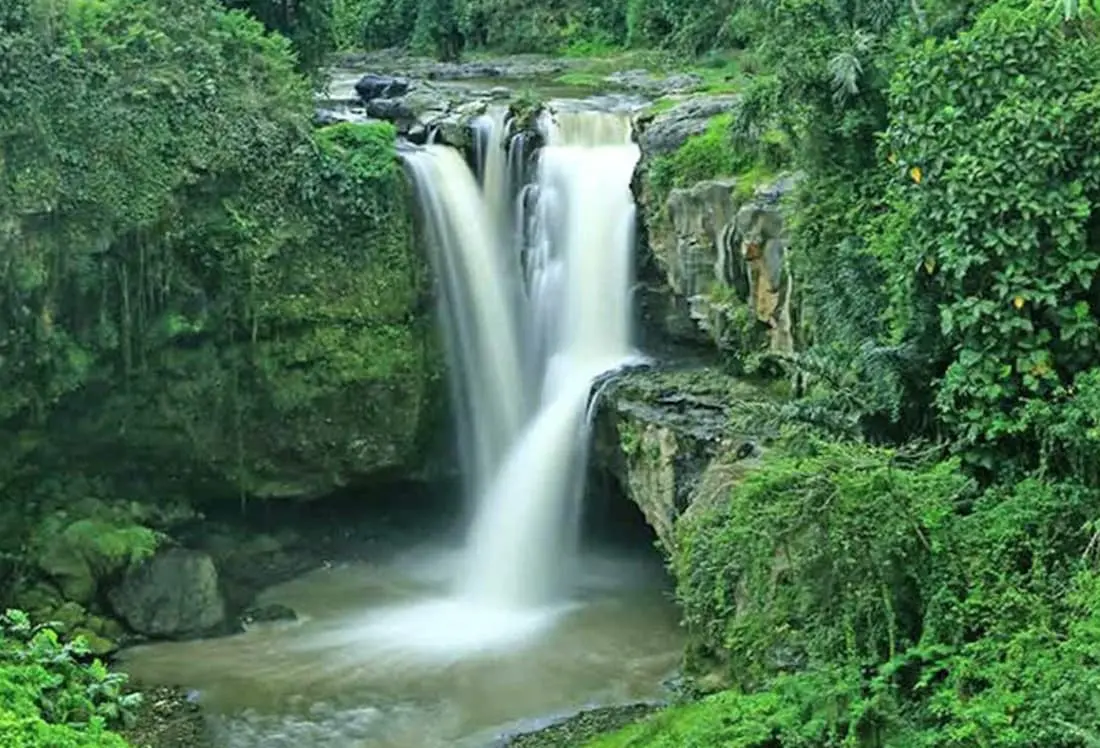
Visiting waterfalls, like any tourist attraction in Bali, requires an entry fee. The cost varies from 50,000 IDR to 200,000 IDR per person (averaging up to 10 USD).
Kanto Lampo Waterfall - https://maps.app.goo.gl/sdFYhSE1Eik26w8p6.
One of the most Instagram-worthy waterfalls in Bali. Most tourists come here for stunning atmospheric photos against the backdrop of flowing water.
Tegenungan Waterfall - https://maps.app.goo.gl/eDwPeXy8ZDFDrxxDA.
This waterfall is located in a valley. Here, you can not only get great shots with your significant other but also take a dip. Remember that the water in Bali is considered sacred, and any bathing is viewed as a purification ritual in the source of the island's infinite power.
Sekumpul Waterfall - https://maps.app.goo.gl/poxBKrUZoVPu11Lt7.
The largest waterfall on the island. It is not located in Ubud; you need to drive about 30 minutes north by bike or around 1 hour by car. This is not just about admiring the 80-meter waterfall, but also a fantastic walk through untouched jungles to its base.
Banyumala Waterfall - https://maps.app.goo.gl/m2PtpCRkCmBAu16M8.
This waterfall is even further north on the island. If swimming in the previous waterfalls left you feeling chilly, the water in the lagoon here warms up so well that it becomes incredibly comfortable for swimming.
TEMPLES AND PALACES are more frequently visited by those who are interested in the local culture, religion, and history. There are several main gems on the island that you should visit if you have enough time.

Tirta Gangga - https://maps.app.goo.gl/TQsWzif6zgo1FYcD6.
A world-famous water palace in Karangasem. The palace stands on a sacred spring that is nearly 300 years old. Its architecture was inspired by the Palace of Versailles in France. The palace was built by the last raja of the Karangasem principality.
Tanah Lot - https://maps.app.goo.gl/mU1vTAMdmpxNAz3H7
One of the most important temples for the spiritual world of Bali. The most popular tourist activity is watching the sunset at this temple, which is located on a small island in the sea. Remember that when visiting sacred places, your knees should be covered with a sarong.
Pura Lempuyang Luhur - https://maps.app.goo.gl/PVhVaSb3xwPkhL45A
The oldest and most authentic temple on the island of Bali. On the way to the temple, you may often encounter dense fog, adding a mystical and magical atmosphere to the place. The temple is dedicated to the one god Ishvara, the creator of the universe. From here, there are stunning views of the largest volcano, Agung, and the city of Amlapura (the third most populous city in Bali).
Besakih Great Temple - https://maps.app.goo.gl/nFyKfk3oC5ekuoGk9
This temple was built to protect the local residents from the eruptions of Agung. It is the largest temple complex on the island. Balinese people believe that the "axis of the world" is located near this temple. This complex is situated right on the slopes of the volcano, and during the eruption in 1963, it was the only building that remained unharmed. The faith in the sacredness of this place in Bali is boundless.
Pura Tirta Empul - https://maps.app.goo.gl/bBivjTMpnK5x3HGY7
A temple complex known for its ceremonial purifications (Melukat). The purification aims to cleanse a person of beings that inhabit them and feed on their energy. If you have ever been to Bali, you must experience this ceremony here or at the sacred springs of Sebatu - https://maps.app.goo.gl/arBA5PK91yhijYH29.
RICE TERRACES, one of Bali's hallmarks. They truly look stunning, especially during the rice ripening season. Bali has established special programs to protect the island's main treasure - rice. This is what helps preserve these areas from mass development.

Jatiluwih Rice Terraces - https://maps.app.goo.gl/ZwbLE3L67eHFsTUq7.
A great location in the center of the island to spend the night and watch the sunrise over the vast rice fields. Not all tourists visit this area due to its distance from the main tourist attractions.
The area offers opportunities for long walks along several routes of varying lengths and difficulty levels. If you wake up at sunrise and take a stroll through the terraces, you won’t return home until lunchtime.
Ceking Rice Terrace - https://maps.app.goo.gl/kWzoiNU81t6Rdkku8.
The most advertised rice terraces on the island. The trip from Ubud takes no more than 20 minutes, and exploring the terraces will take up to 2 hours. The photos here turn out absolutely stunning. This is where most Instagram photos of Bali's rice terraces are taken.
And what about surfing?
Yes, this is the main reason why about 50% of people fly to Bali. The surfing here is amazing, and even those who have never stood on a board can easily learn in 2-3 weeks and ride their first wave during a short vacation.
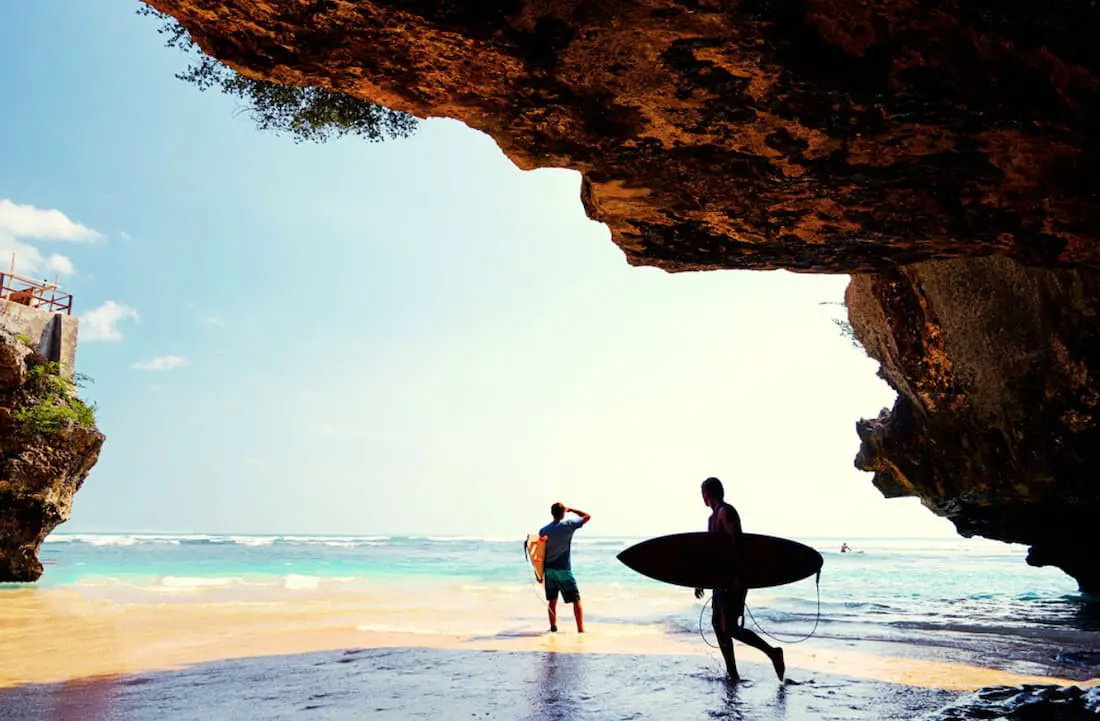
In addition, surfing in Bali is practically a year-round phenomenon. Bali acts like a magnet, attracting waves from all directions of the island, but primarily from the south.
Uluwatu, Canggu, Seminyak, Nusa Dua - these are true surfer districts with great beach accessibility and super waves at dawn.
Here are some of the best surfing spots on the planet:
Padang-padang beach - https://maps.app.goo.gl/7bQJHAQmowubGPM3A
This is a great place to start learning how to surf, and the cost of lessons is very affordable. You can rent a board for about 200,000 IDR, and a 1-2 hour beginner lesson will also cost around 200,000 IDR.
Uluwatu beach - https://maps.app.goo.gl/rypjqbA5CUccRERc9.
This spot is for more advanced surfers, but you’ll be amazed by the beauty of this beach. It cannot be compared to any other beach in the world. To understand this, you must visit at least once and take a stroll along the rocky shore on the soft sand, especially since both beaches are located close to each other.
Another advantage of surfing in Bali is the comfortable water temperature and the absence of dangerous sea creatures. However, of course, risks of injury cannot be avoided. The reefs in Bali can be quite hazardous, and a bad fall could lead to serious injuries.
Remember what I said about healthcare? If you want to surf, you can get travel or expat insurance for short or long terms. On average, such insurance will cost around 60-80 USD per month per person - https://www.tripinsurance.ru.
If you need consultation on relocation and doing business in Bali, CONTACT US via TELEGRAM OR WHATSAPP for quick communication.
Together, we’ll make life on the island comfortable and legal!

